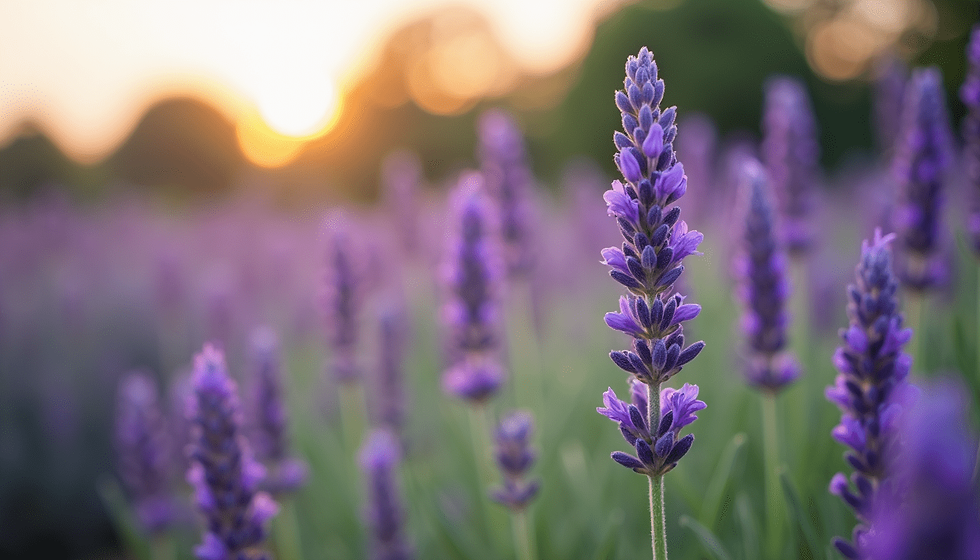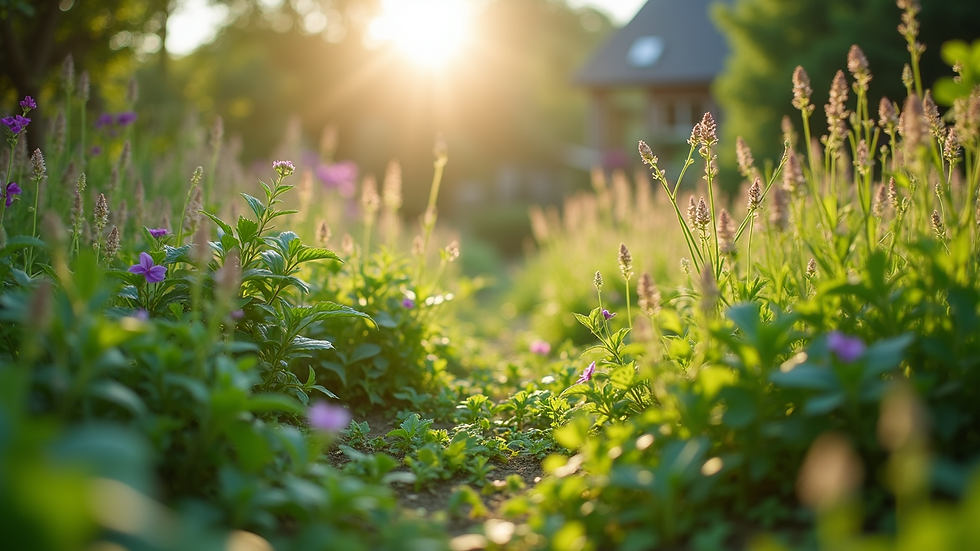Uncovering the Basics of Herbal Garden Companion Planting: A Complete Guide
- The Herbal Exchange
- Apr 1
- 5 min read
Updated: May 12
Companion planting offers gardeners a fantastic way to enhance productivity and improve plant health naturally. By pairing herbs that support one another, you can cultivate a thriving herbal garden filled with health benefits and vibrant colors. Whether you're just starting or have years of experience, learning about companion planting can transform your gardening experience. Let's explore the effective strategies and practices of this rewarding method.
What is Companion Planting?
Companion planting involves growing different plants close together for mutual benefits. This practice can improve growth, repel pests, attract helpful insects, and enhance soil health. For instance, planting carrots alongside onions can help repel the carrot fly, while marigolds are known to deter nematodes from attacking nearby plants.
Understanding how plants interact allows herbal gardeners to make informed decisions, leading to healthier and more productive herbal gardens.
Benefits of Companion Planting for Medicinal Herbs
Implementing companion planting in your herbal garden offers a range of advantages. Here are some key benefits:
Pest Management: Certain herbs naturally repel pests. For example, marigolds can deter harmful nematodes, while basil planted with tomatoes helps keep aphids away. Studies have shown that plants like basil can reduce pest populations by up to 50%.
Enhanced Growth: Companion plants often give each other support. For instance, tall herbs like fennel can provide shade for smaller herbs that may struggle in the direct sun. Research indicates that companion planting can boost growth rates by as much as 20%.
Soil Health: Legumes, like clover, fix nitrogen in the soil, improving soil fertility. This is crucial because well-nourished soil leads to healthier herbs and can increase yields by over 30%.
Pollinator Attraction: Plants like lavender and borage attract important pollinators such as bees and butterflies. Pollinated herbs can produce 60% more flowers, enriching your garden.
Flavor and Aroma: Certain herbs enhance each other's flavor and aroma. For example, mint grown alongside chamomile can boost the fragrance of both plants, making your garden a sensory delight.
Choosing the Right Companion Herbs
When selecting companion plants, consider their specific needs and growing conditions. Below are popular medicinal herbs and their best companions:
Lavender (Lavandula)
Lavender is celebrated for its calming properties and fragrant flowers. It thrives in dry, well-drained soil and full sun.
Companions: Rosemary, sage, and thyme. These herbs thrive under similar conditions and help deter pests harmful to lavender, boosting its growth.
Basil (Ocimum basilicum)
Known for its culinary uses and medicinal benefits, basil is a staple in many gardens.
Companions: Tomatoes and peppers. Planting basil near these vegetables can help repel pests, improving fruit quality by up to 40%.
Thyme (Thymus vulgaris)
A versatile herb rich in antiseptic qualities, thyme flourishes in various environments.
Companions: Cabbage family plants and strawberries. Thyme attracts beneficial insects, leading to healthier neighboring plants.
Echinacea (Echinacea purpurea)
Renowned for its immune-boosting effects, echinacea is a valuable herb in any garden.
Companions: Coneflowers and bee balm. These plants attract pollinators, increasing your chances of cross-pollination.
Peppermint (Mentha × piperita)
Peppermint is known for its digestive health benefits and cooling flavor.
Companions: Cabbage and carrots. By planting peppermint, you can naturally deter pests common to these crops.

Planning Your Herbal Garden Layout
Creating an effective garden layout is crucial for successful companion planting. Here are some steps to consider:
Map Out Your Space: Measure your garden area and create a rough sketch. This helps visualize placements.
Group Herbs by Needs: Cluster herbs with similar sunlight and water requirements together to create a harmonious environment.
Incorporate Companion Relationships: Use a companion planting chart to place beneficial herbs close to each other.
Leave Room for Growth: Ensure each plant has adequate space to thrive. For example, leave at least 12 inches between larger herbs to prevent competition.
Consider Seasonal Changes: Plan for herbs that flourish at different times of the year. Stagger planting times to maintain a productive garden throughout the season.
Common Companion Planting Mistakes to Avoid
Though companion planting can be highly beneficial, avoid these common mistakes:
Choosing Incompatible Plants: Not all plants work well together. Research to ensure your plants have compatible needs, preventing lackluster growth.
Overcrowding: Crowded plants can stunt each other's growth. Always allow for space to prevent competition for resources.
Ignoring Soil and Water Needs: Mixing herbs with vastly different care requirements can hinder growth. Align plants with similar nutrient needs for optimal health.
Lack of Planning: An impulsive approach to planting can create chaos. A thoughtful layout is essential for success and ease of maintenance.
Failing to Observe Changes: Monitor your garden frequently. If you notice health declines or pest problems, adjust your plant placements promptly.
Maintaining a Companion Herbal Garden
Proper care is essential for a thriving herbal garden. Follow these guidelines to keep your companion plants healthy:
Regular Watering: Ensure your herbs receive consistent water without over-saturating the soil. Mulching can help retain moisture and suppress weeds.
Pruning and Harvesting: Regularly harvest your herbs to promote bushier growth. This also helps prevent legginess.
Soil Testing: Check your soil at least once a year to ensure it meets your herbs' needs. Consider adding organic compost or fertilizers as required.
Pest Checks: Inspect for pests and diseases regularly. Prompt action can prevent small problems from becoming major issues.
Seasonal Care: Protect frost-sensitive herbs with mulch in winter. In spring, tidy your garden by removing debris and replanting as needed.
Seasonal Companion Planting Strategies
To make the most of companion planting, tailor your strategies based on seasonal changes. Here are some tips:
Spring
Start your herbs indoors or in a greenhouse.
Plant companions that grow well early, like basil with tomatoes.
Introduce cold-tolerant herbs such as chives and parsley.
Summer
Keep an eye out for pests and adjust watering schedules accordingly.
Harvest early herbs to encourage the growth of remaining companions.
Introduce heat-loving herbs like oregano and thyme.
Fall
Prepare sensitive herbs for cooler weather by mulching.
Consider planting late bloomers or perennials to keep your garden visually appealing.
Plan for crop rotation next season based on your observations from this year's garden performance.
Herbal Garden Success Tips
Companion planting provides a wonderful opportunity to maximize the benefits of your herbal garden. By understanding plant relationships and proper care techniques, your garden can thrive in health and productivity.
From selecting ideal companion herbs to establishing a thoughtful layout, this guide lays the groundwork for a rewarding gardening journey. Embrace these strategies, and enjoy watching your herbal garden flourish into a vibrant, productive sanctuary.

By following these principles, you'll effectively navigate the world of herbal companion planting, leading to a bountiful garden filled with natural remedies. Prepare to roll up your sleeves and embark on this fulfilling gardening adventure!



Comments